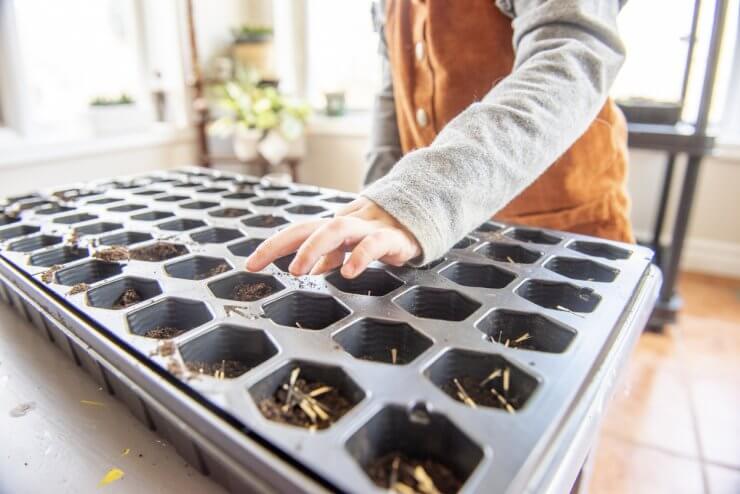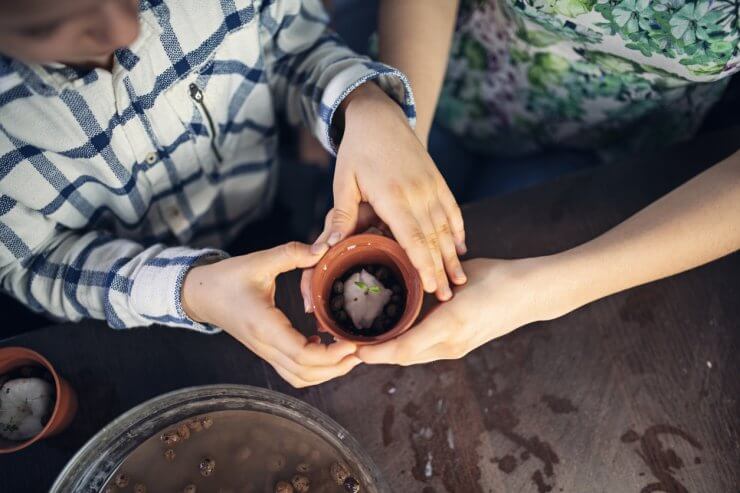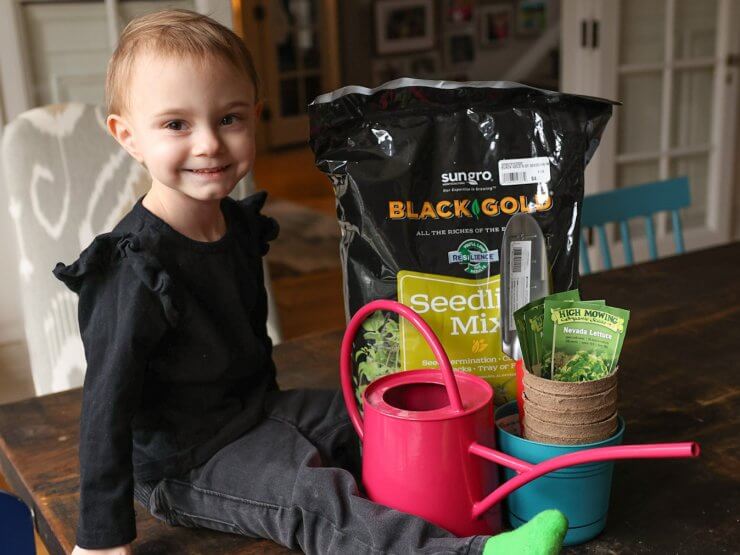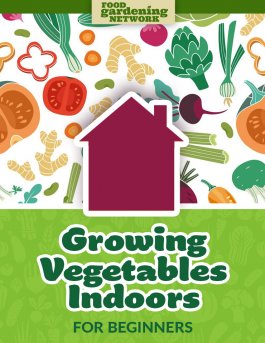
Yes, I know. Kids and vegetables don’t have a reputation for being on speaking terms. And now here we are adding the word “tasty” to the idea of indoor plant growing kits. I get it. There are definitely some vegetables that you can file in the “acquired taste” category.
I’d also wager that some roasted honeynut squash or sweet potatoes are met with glee from young diners near and far. While Brussels sprouts may not be on the menu anytime soon, you can bet fresh peas will be a favorite.
Kids also love science, and there’s not much better in my book than science you can eat. I don’t care how many times you plant a seed; it’s still the coolest thing ever to watch them sprout and grow into something you can harvest and put on your plate for dinner. Honestly, indoor plant growing kits are a two-for-one; you get to teach kids about biology, and you get tasty food.
Discover the 3 top options for growing vegetables indoors—when you access the FREEBIE Growing Vegetables Indoors for Beginners, right now!

Making your very own personalized indoor plant growing kits from scratch
I could go on about the vegetables and herbs I like to plant and keep indoors, but success begins with choosing something you like. To create simple kits for kids that can also be great basket-fillers for spring holidays, you’ll only need:
- Seeds
- Seed-starting containers
- Pots
- Watering can
- Transplanting trowel if your plants will eventually be moved outdoors
- Enough seed-starting and potting soil to fill said containers
- Optional: Paint for decorating their pots (see our tutorial on painting pots with kids in our August 2020 issue of Food Gardening)
- Optional: grow lights
Below is a picture of my daughter Ruby with her first indoor plant growing kit. It was supposed to be for Easter, but she saw me taking the photo and, well, so much for that surprise, she even wanted to pose with it! For this kit I focused on what we’d be growing indoors as seedlings, and later transplanting into the garden.

You might find that growing vegetables themselves makes kids a bit more eager to try veggies they might otherwise avoid. Radishes are a good example. They can be a bit peppery and “spicy” for kids, but there’s an undeniable excitement in trying something you’ve grown yourself. And because they grow easily and quickly, they’re fun to watch, and they give kids that satisfaction that comes with success.
Once you narrow down your seed selection to a list of favorites, it’s time to see what your indoor conditions are like. A nice, bright room is great for indoor plant growing kits in the summer. In the winter, however, you’ll want to keep your plants away from drafts, and there’s a good chance you’ll need a grow light or two. So think about your space when you decide what to grow. How much light do you get? How warm or cool is the area where your plants will live?
Now for the fun part! You have your seeds picked out; it’s time to choose containers and get things going. I like to start my seeds in egg cartons. Each of those little egg cups is perfect for getting things moving, and they’re super easy to transplant to permanent homes. Make sure you use a good indoor potting mix, too, so your seedlings get plenty of nutrients.
You can start your seeds in the container they’ll live in, and some plants like radishes don’t like to be moved. The advantage of starting your seeds in smaller containers is that you don’t “waste” space on seeds that don’t germinate. Really, though, for making your own indoor plant growing kits, you can go either way.
What does matter is the container where your plants will mature. Most carrots, for example, need a container that’s at least 8-to-12-inches deep. The variety of carrots you plant will play a significant role here. For example, the heirloom Red Cored Chantenay carrot has roots that are around 5-inches. For something smaller and unique, another heirloom, the Parisian Carrot, is about the size of a radish and ideal for containers.
In fact, the variety of plants you choose overall will play a big role in how successful you are. The Tiny Tim tomato is a prolific producer and ideal for indoor plant growing kits. The Black Krim, on the other hand, is an amazingly delicious tomato, but you’ll need a pretty large pot (5-gallon, at least) to even attempt these indoors.
Those are the essentials. Choose plants you like, look for varieties that grow well in containers, narrow that choice down based on your space, plant them in the right containers, and tend to them just like you usually would.
As a bonus, here’s a good indoor mix that should give you a variety of flavors and harvest dates.
Vegetables you can harvest sooner:
- Radishes
- Beets
- Leaf lettuce
- Spinach
Vegetables that will take some time to grow:
- Sweet peppers
- Cherry tomatoes
- Peas
- Cucumbers
Once you put together your own indoor plant growing kits, you can gift them to your kids, or surprise them on a rainy winter or spring day!
Have you ever put together an indoor plant growing kit? What was in it?
Discover the 3 top options for growing vegetables indoors—when you access the FREEBIE Growing Vegetables Indoors for Beginners, right now!




